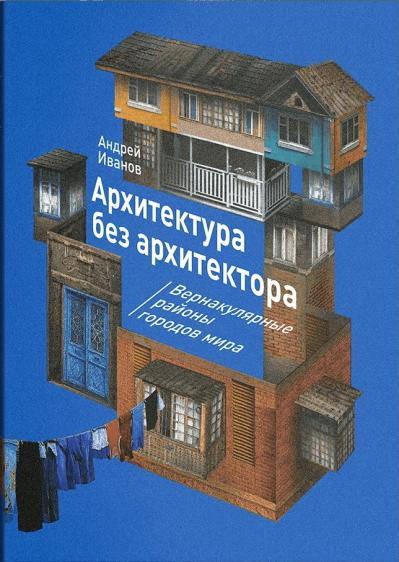Architecture without an architect. Vernacular neighborhoods of the world's cities
49.99 €
Out of stock
The first book in Russian about vernacular architecture - spontaneous construction of historical city districts without the participation of professional architects.
More than 240 color illustrations, including reproductions of paintings, rare archival photographs and photos taken by the author. Few people are able to talk about the life of cities with such warmth, passion and excitement as architect and urbanist Andrei Ivanov. In his new book, using examples of historic neighborhoods in Western European and post-Soviet cities, he talks about such a cultural phenomenon as architectural vernacular (building done in local traditions, but without the participation of professional architects), contrasting it with everything state-owned, developmental, and "dropped from above"; about the possible loss of what heritage we have left and ways to preserve it. Andrei Ivanov's text is a kind of ode to the man-creator and what he is able to create with his own hands, without losing his freedom and individuality, despite the pressure of the outside world. "Vernacular neighborhoods are pockets of quiet private resistance, not suppressed by the empire. Here people, so similar to everyone else, were able to build and preserve their own small towns parallel to the imperial one, to live in them their own way of life, successfully implementing the 'strategy of denial'." The first part of the book is devoted to the essence of today's understanding of vernacular as an anti-imperial culture - and post-Soviet Armenia, with its diverse and much-loved by the author folk spontaneous development, serves as an example. The second part was the author's selection of three types of "islands of freedom": The central districts of those historic cities where Ivanov worked or engaged in urban studies (Gorodets in the Nizhny Novgorod region, Karakol and Uzgen in Kyrgyzstan, Ekfjö in Sweden); the sites of his books and publications in the professional press (the Yerevan tracts of Stary Nork, Firdus, Getar, Kond, and the city of Gyumri); and the places he visited specifically for the enjoyment of historic districts - in Greece, Germany, Belgium, Portugal, Finland, and Georgia.
More than 240 color illustrations, including reproductions of paintings, rare archival photographs and photos taken by the author. Few people are able to talk about the life of cities with such warmth, passion and excitement as architect and urbanist Andrei Ivanov. In his new book, using examples of historic neighborhoods in Western European and post-Soviet cities, he talks about such a cultural phenomenon as architectural vernacular (building done in local traditions, but without the participation of professional architects), contrasting it with everything state-owned, developmental, and "dropped from above"; about the possible loss of what heritage we have left and ways to preserve it. Andrei Ivanov's text is a kind of ode to the man-creator and what he is able to create with his own hands, without losing his freedom and individuality, despite the pressure of the outside world. "Vernacular neighborhoods are pockets of quiet private resistance, not suppressed by the empire. Here people, so similar to everyone else, were able to build and preserve their own small towns parallel to the imperial one, to live in them their own way of life, successfully implementing the 'strategy of denial'." The first part of the book is devoted to the essence of today's understanding of vernacular as an anti-imperial culture - and post-Soviet Armenia, with its diverse and much-loved by the author folk spontaneous development, serves as an example. The second part was the author's selection of three types of "islands of freedom": The central districts of those historic cities where Ivanov worked or engaged in urban studies (Gorodets in the Nizhny Novgorod region, Karakol and Uzgen in Kyrgyzstan, Ekfjö in Sweden); the sites of his books and publications in the professional press (the Yerevan tracts of Stary Nork, Firdus, Getar, Kond, and the city of Gyumri); and the places he visited specifically for the enjoyment of historic districts - in Greece, Germany, Belgium, Portugal, Finland, and Georgia.
See also:
- All books by the publisher
- All books by the author



